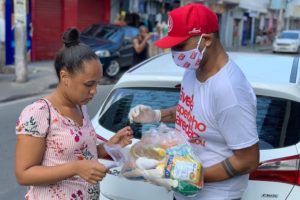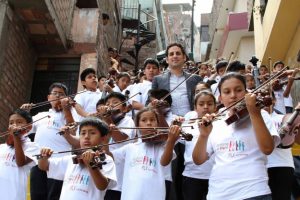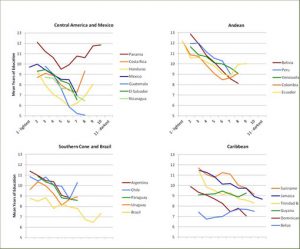
AQ Top 5 Champions of Gender Equality: Yalitza Aparicio
The actress-turned-advocate fighting for marginalized women in Mexico.

AQ Top 5 Líderes de la igualdad de género: Yalitza Aparicio
La actriz se convirtió en defensora de las mujeres marginadas de México.

In Brazil’s Favelas, Organizing Is the Difference Between Life and Death
The grassroots effort to battle hunger, fake news and COVID-19 itself.

Sinfonía por el Perú: Orchestrating Social Inclusion
A free music program in Peru is effecting change beyond the concert hall.

Trailblazers: First-Generation College Students Tell Their Stories
In honor of Americas Quarterly‘s launch of its Summer 2014 issue on higher education and competitiveness, we asked first-generation college graduates from around the hemisphere to describe how they defied the odds to get their college degrees. The six former students featured below—the first in their families to graduate from college—have since gone on to … Read more

How Guatemala Is Tackling Its Social Issues
One year ago, Americas Quarterly’s 2013 Social Inclusion Index gave Guatemala the lowest total score of all countries evaluated, with a total of 14.8 points out of a possible 100. The index ranked 16 countries, including the United States and 15 countries from Latin America. The comments in the evaluation for Guatemala indicated that “Poverty … Read more

[i]AQ[/i] Videos: The 2013 Social Inclusion Index
Descarga el PDF del Índice en español. Descarga el PDF del Índice en español. In a series of video interviews below, AS/COA President and CEO Susan Segal, AQ Editor-in-Chief Christopher Sabatini and AQ Editor Alana Tummino discuss the results of AQ‘s 2013 Social Inclusion Index, which draws from household survey data, public opinion surveys, statistics … Read more
[i]AQ[/i] Q&A: Judith Morrison on Race and Ethnicity
Judith Morrison, AQ author and senior advisor at the gender and diversity unit of the Inter-American Development Bank (IDB), speaks with Americas Quarterly about the importance of accurately integrating racial and ethnic populations into data collection. The methods for tabulating race and ethnicity vary widely between national censuses and household surveys, especially since some countries … Read more
The Next Step in Improving Equity: Tax Reform
In the last decade, inequality has decreased in the majority of countries in Latin America. This historic shift was largely the result of unprecedented, steady economic growth and increased public spending that targeted the most vulnerable populations—mainly through conditional cash transfer programs. Nevertheless, income inequality is still unacceptably high. With a Gini coefficient of 0.52, … Read more
[i]AQ[/i] Q&A: Marcelo M. Suárez-Orozco on Mixed-Status Immigrant Families
Marcelo M. Suárez-Orozco, AQ author and Courtney Sale Ross University Professor of Globalization and Education at New York University’s Steinhardt School of Culture, Education, & Human Development, speaks with Americas Quarterly about the “legal, policy, economic, and ethical considerations” that result from an estimated 5.5 million children and adolescents growing up in the United States … Read more

The Effects of Skin Color in the Americas
Throughout Latin America, countries have long sought to claim immunity from the racial and ethnic divisions that plague the rest of the world. But that is changing as several countries—including Bolivia, Colombia, Mexico, Paraguay, and Peru—have begun to recognize the diverse nature of their societies and constitutionally declare themselves as multicultural. Most national censuses in … Read more

Keys for a Sustainable and Democratic Development in Latin America
Latin America’s vast geography contains great wealth as well as endless cultural, linguistic and historical diversity. While Latin American countries may face common challenges, finding solutions to these problems is a process as varied as the region itself. It will be imperative for the next U.S. President-elect to understand this fact and respond accordingly. Challenges … Read more


